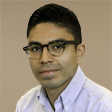About Kiplinger’s Economic Outlooks
Regularly updated insights and analysis on the economy’s next moves.

Kiplinger's Economic Outlooks are written by the staff of our weekly Kiplinger Letter and are unavailable elsewhere. Click here for a free issue of The Kiplinger Letter or more information.
Gross Domestic Product Outlook
Read our current GDP forecast »
Gross domestic product is the broadest indicator of the economy, measuring the value of final goods and services produced in the U.S. in a given time period. It is perhaps the most closely watched indicator as well, serving as a guidepost for Federal Reserve interest rate policy and for budgeting in both government and private industry.
At Kiplinger, we examine what trends are driving GDP up (or down) and forecast its future direction quarter by quarter.

Sign up for Kiplinger’s Free E-Newsletters
Profit and prosper with the best of expert advice on investing, taxes, retirement, personal finance and more - straight to your e-mail.
Profit and prosper with the best of expert advice - straight to your e-mail.
Interest Rates
Read our current interest rates forecast »
Interest rates are of tremendous interest to borrowers (for whom they are a cost) and lenders (a category that includes individuals trying to get some return on their bank savings). Almost everyone is in one or both categories. The level of short-term rates, such as those used by banks when loaning each other money overnight, is set by the Federal Reserve through its Open Market Committee, usually at regularly scheduled Fed meetings.
Generally, the longer the period of the loan, such as with 10-year Treasury Bonds or mortgages, the more important market factors become compared with the Federal Reserve's actions. We forecast both what we expect the Federal Reserve to do in the near term and to what extent that will affect the direction of long-term interest rates.
Inflation Rate
Read our current inflation forecast »
Inflation is the generally rising price of goods and services, or why things cost more. It's measured by the Department of Labor using a sample, dubbed a "market basket," of what people in urban areas in the U.S. actually buy each month. Then each month, data collectors check the prices of those items. From that research, we get the Consumer Price Index (CPI). A component of that index, the core inflation rate, which excludes the more volatile prices of food and energy, is also closely watched. At Kiplinger, we forecast changes in both.
Economists generally believe that moderate inflation is best for an economy. Prices that are rising too quickly cause consumers heartburn, of course, but prices that are flat or falling are a problem, too. This condition, known as deflation, makes debts more expensive to pay back and can lead to declining business investment.
Employment Outlook
Read our current jobs forecast »
If gross domestic product is the broadest indicator of the economy, employment is the one most personally felt. These are people's jobs we're talking about.
Two distinct metrics make up the employment forecast. The more important one is the "payroll report," a summation by the Department of Labor of how many jobs the economy has created (or lost) each month. This data is broken out by sector, such as manufacturing, mining and health care. Note that simply to keep up with population growth, the economy needs to add more than 100,000 jobs every month; otherwise the unemployment rate will rise.
That rate is the other closely watched figure. It's a simple division of the number of people who have looked for work in the prior four weeks but who do not have a job by how many people are currently in the labor force. That simplicity belies some underlying concerns about the unemployment rate. One key concern: Potential workers who aren't actively looking for work aren't included in the calculation.
Energy
Read our current energy forecast »
Like it or not, petroleum and natural gas remain incredibly important to the U.S. economy. Knowing where oil prices are headed is critical to businesses of all stripes, from airlines to plumbing companies. Consumers planning their family budgets and their vacations care, too. Not only do we monitor Department of Energy reports, but we also talk to commodities traders and petroleum engineers to forecast price trends, changes in production technologies and consumer habits.
Housing
Read our current housing forecast »
In addition to being the roof over our heads, housing is an important sector in the economy. Three statistics form the core of our coverage: sales of existing homes (and the prices those sales fetch); sales of new homes; and housing starts, which reflect new construction that is counted in GDP.
Because housing is a diversified and highly regional industry, our reporting and forecasting are informed by other research as well as conversations with industry experts as well.
Retail
Read our current retail forecast »
Consumers are the engine of our economy, and when their spending flags, business feels it. We examine trends that are influencing their habits, such as falling gas prices, to forecast what they'll be buying in the future and how much they'll be willing to shell out both on everyday items and on big-ticket purchases such as cars and trucks.
Trade
Read our current trade forecast »
All nations of consequence trade with others. Those that buy more from other countries than they sell in turn have a trade deficit, and that's been the story for the United States since the mid-1970s.
How big that deficit will be, and whether the changes will result from more (or fewer) imports or more (or fewer) exports, is the crux of our forecasting. We look at specific sectors (such as agriculture) where the United States is doing well selling abroad, as well as what items (such as smartphones) we buy from overseas. We also discuss the strength of the dollar versus foreign currencies and how that affects trade trends.
Business Equipment Spending
Read our current business spending forecast »
How much businesses are laying out in investment is critical to other businesses in guiding their own spending. In making our forecasts for the direction of business spending in the quarters and years ahead, we follow two indexes from the Census Bureau: Durable Goods Shipments and Orders and Business Inventories reports.
Get Kiplinger Today newsletter — free
Profit and prosper with the best of Kiplinger's advice on investing, taxes, retirement, personal finance and much more. Delivered daily. Enter your email in the box and click Sign Me Up.

David is both staff economist and reporter for The Kiplinger Letter, overseeing Kiplinger forecasts for the U.S. and world economies. Previously, he was senior principal economist in the Center for Forecasting and Modeling at IHS/GlobalInsight, and an economist in the Chief Economist's Office of the U.S. Department of Commerce. David has co-written weekly reports on economic conditions since 1992, and has forecasted GDP and its components since 1995, beating the Blue Chip Indicators forecasts two-thirds of the time. David is a Certified Business Economist as recognized by the National Association for Business Economics. He has two master's degrees and is ABD in economics from the University of North Carolina at Chapel Hill.
-
 Who Pays the Most Taxes in the U.S.? Tax Burden by Age
Who Pays the Most Taxes in the U.S.? Tax Burden by AgeTax Burden Polls show that most people feel like taxes are unfair. But which age group bears the brunt of the tax burden in the United States?
By Kelley R. Taylor
-
 Tax Day 2025: Don’t Miss These Freebies, Food Deals and Discounts
Tax Day 2025: Don’t Miss These Freebies, Food Deals and DiscountsTax Day You can score some sweet deals on April 15 in some select restaurants like Burger King, Shake Shack, and more.
By Gabriella Cruz-Martínez
-
 What DOGE is Doing Now
What DOGE is Doing NowThe Kiplinger Letter As Musk's DOGE pursues its ambitious agenda, uncertainty and legal challenges are mounting — causing frustration for Trump.
By Matthew Housiaux
-
 A Move Away From Free Trade
A Move Away From Free TradeThe Letter President Trump says long-term gain will be worth short-term pain, but the pain could be significant this year.
By David Payne
-
 Trump’s Whirlwind Month of Crypto Moves
Trump’s Whirlwind Month of Crypto MovesThe Kiplinger Letter The Trump administration wants to strengthen U.S. leadership in the cryptocurrency industry by providing regulatory clarity.
By Rodrigo Sermeño
-
 What Could Derail the Economy This Year?
What Could Derail the Economy This Year?The Letter While the outlook for the U.S. economy is mostly favorable, there are plenty of risks that bear watching.
By David Payne
-
 Three Ways President Trump Could Impact the Economy
Three Ways President Trump Could Impact the EconomyThe Letter Some of Trump's top priorities could boost economic growth, but others risk fueling inflation.
By David Payne
-
 10 Predictions for 2025 from The Kiplinger Letter
10 Predictions for 2025 from The Kiplinger LetterThe Kiplinger Letter As 2025 arrives, here are our top 10 forecasts for the new year.
By Letter Editors
-
 Europe Faces Economic and Political Headwinds Next Year
Europe Faces Economic and Political Headwinds Next YearThe Letter Challenges for Europe: Potential tariffs, high energy prices and more competition from China will weigh on the bloc in 2025.
By Rodrigo Sermeño
-
 Don't Sleep on Japan's Economic Transformation
Don't Sleep on Japan's Economic TransformationThe Letter After almost three lost decades, Japan — one of the world's biggest economies — is finally showing signs of life.
By Rodrigo Sermeño

